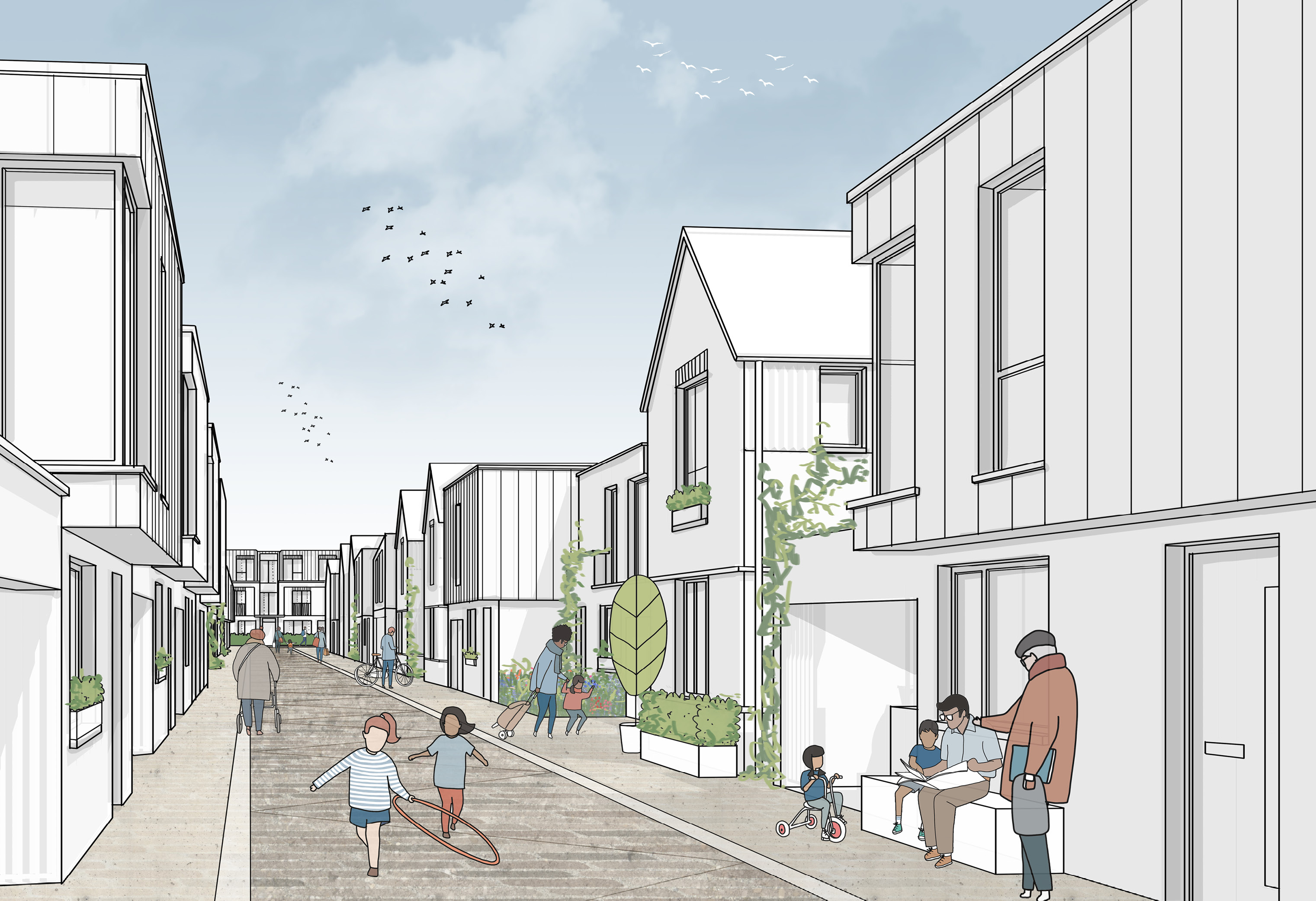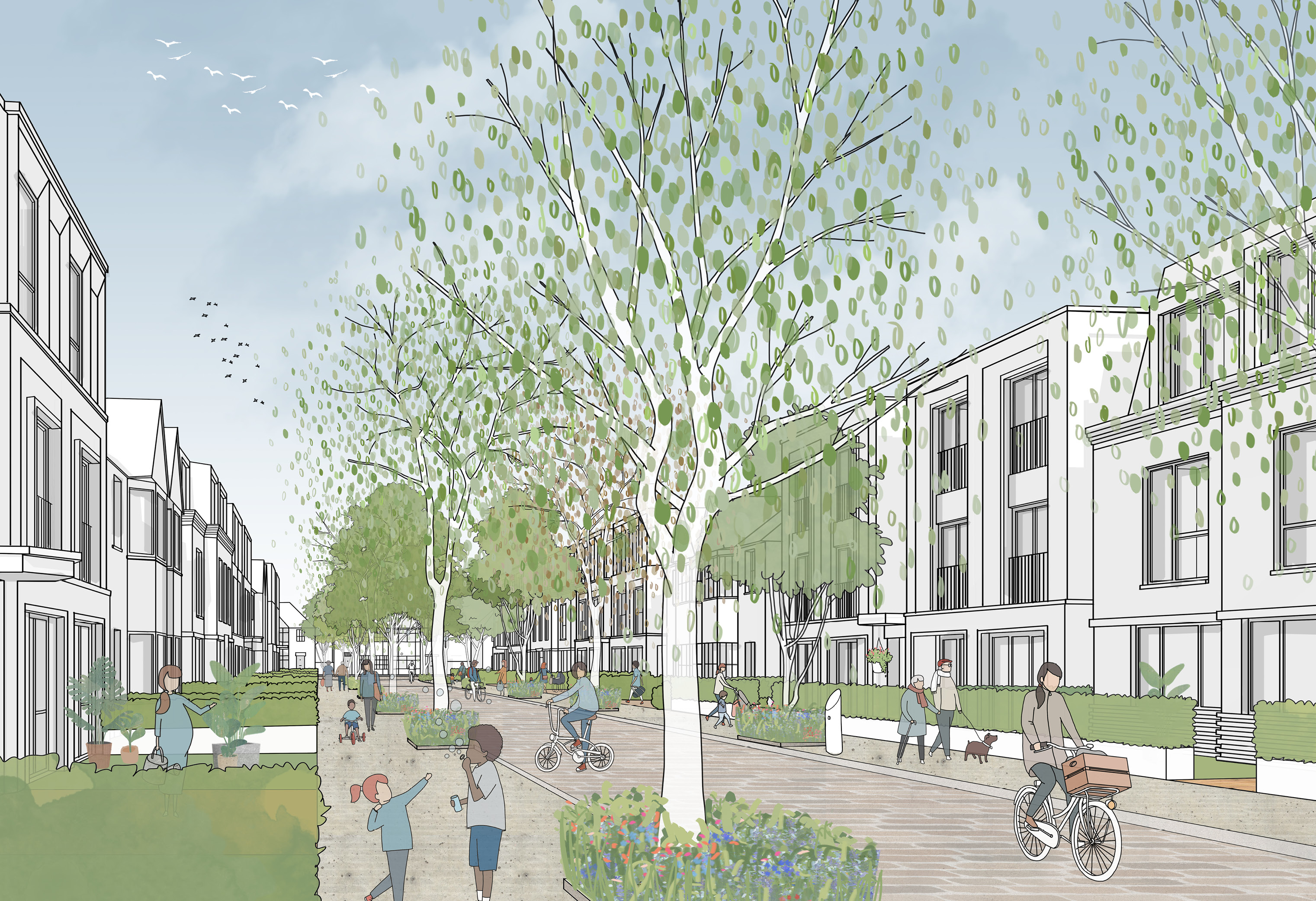Let streets vote to ‘build beautiful’ and create post-Covid housing boom, says Policy Exchange's new report
HTA were pleased to contribute to the Policy Exchange's Strong Suburbs report and we urge policy makers to take note of its proposals to address long-standing obstacles to the wellbeing of our suburbs.
- Major Policy Exchange paper proposes street votes that would allow the building of new terraces in the public’s favourite styles, solving how to implement proposals in Government’s White Paper and Building Better Building Beautiful Commission Report
- It has been endorsed by Ben Derbyshire, Chair of HTA Design LLP and former President of the RIBA, Christopher Boyle QC, head of the Georgian Group, Russell Curtis, RCKa and Mayor of London’s design advocate, Andrew Boff, Chair of the London Assembly Planning Committee, Anya Martin, Director of PricedOut, Peter Eversden MBE, Chairman of London Forum, representing over 100,000 members of civic societies, and many more.
- Turning streets of bungalows or semi-detached properties into larger terraced houses could make millionaires of suburban homeowners and address housing shortage
- The street votes idea is supported by the Government in its official response to the “Building Better, Building Beautiful Commission”
- Policy Exchange has been at the forefront of the housing debate since 2018, having published Sir Roger Scruton’s original Building More, Building Beautiful research paper.
The UK can protect greenfield and green belt land by unlocking space for millions of houses in popular Georgian and Victorian styles in the suburbs of British cities, says a new report from Policy Exchange.
Strong suburbs, by Dr Samuel Hughes and Ben Southwood, notes that Government has moved away from ‘top-down’ plans to encourage development in areas with housing shortages. Instead, it argues that a ‘bottom up’ approach driven by local communities will deliver popular and beautiful housing without the need for imposition.
The main proposal would let individual streets vote to give themselves planning permission allowing them to turn themselves from bungalows or semis into terraces.
The report lays out in detail how local residents could prepare and agree to a ‘street plan’, and how they could profit from its implementation. The street plan would include rules around parking, contributions to local authorities, heights, and design. It would also include strict restrictions designed to protect light, shade, overlooking and visual impact on neighbouring streets. Policy Exchange’s proposals have been reviewed and approved by several of the country’s top planning lawyers.
Groundbreaking new modelling shows that the average homeowner who did take up the scheme could make hundreds of thousands, and on occasion millions of pounds, depending on where they live (league table below) – after building costs and costs of finance.
The idea would generate large flows of housebuilding opportunities for small and medium sized builders across the country, helping to pull Britain out of the Covid slump with outdoor, ventilated job opportunities at a range of skill levels. This would mean an estimated £33bn spent on construction every year, creating a sustainable construction boom to fire the economic recovery after Covid.
The paper argues that street votes would:
- Reduce the pressure for sprawl in the countryside and ugly towers in historic town centres;
- Promote walking, cycling and public transport;
- Support struggling high streets;
- Accelerate the transition to Net Zero emissions;
- and open a pathway to homeownership for a new generation.
The report contains a foreword from Ben Derbyshire, immediate past president of RIBA, and chair of HTA design. HTA's Supurbia concept is a key inspiration for Strong Suburbs
Top ten local authorities for ‘street votes’ with potential gains for participating homeowners
- Barnet 36,000 participating homeowners £1m per homeowner
- Harrow 23,000 £800,000
- Croydon 21,000 £650,000
- St Albans 18,000 £900,000
- Bromley 17,000 £750,000
- Hillingdon 15,000 £1m
- Kingston upon Thames 17,000 £1m
- Enfield 19,000 £1m
- Brent 17,000 £750,000
- Brighton and Hove 13,000 £750,000












